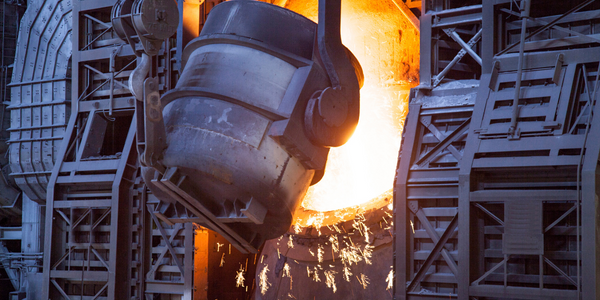Download PDF
Schnitzer Steel Accelerates Workflows by 60% with Nintex
Technology Category
- Cybersecurity & Privacy - Security Compliance
Applicable Industries
- Metals
- Recycling & Waste Management
Applicable Functions
- Human Resources
- Quality Assurance
Use Cases
- Inventory Management
- Time Sensitive Networking
The Challenge
Schnitzer Steel Industries, Inc., one of the largest recyclers and manufacturers of metal products in the United States, was grappling with complex and time-consuming corporate processes. The company's HR processes, including hiring and performance reviews, were particularly cumbersome, involving spreadsheet files, Microsoft SharePoint Designer-based workflows, InfoPath forms, Excel tracking documents, manual email approvals, and paper signatures. Onboarding an employee could require six types of approvals and coordination among five managers. Forms included several hundred fields with lengthy drop-downs. This resulted in poor visibility into processes and consumed significant time, slowing down the overall productivity of the organization.
About The Customer
Schnitzer Steel Industries, Inc. is one of the largest recyclers and manufacturers of metal products in the United States. The company's business processes were previously complex and time-consuming, involving multiple forms, approvals, and coordination among managers. The HR department, in particular, was burdened with lengthy and complicated processes for hiring and performance reviews. The company sought a solution to streamline these processes, enhance visibility, and improve overall efficiency.
The Solution
To streamline its HR processes and enhance overall efficiency, Schnitzer Steel adopted Nintex Workflow for Office 365 and Nintex Forms. These solutions were applied to various processes throughout the company, including compliance, auto and metal recycling, and point of sale-generated alerts. The Employee Action Form, which supports everything from hiring to employee changes in pay, title, department, and address, was transformed into a Nintex form that automatically completes fields and presents only content that’s relevant for a particular need. The company also automated the performance review processes with Nintex Workflow, which enabled the preparation and distribution of performance review forms for the company’s 2,100 employees, saving the HR team three months of manual work.
Operational Impact
Quantitative Benefit
Related Case Studies.

Case Study
Goldcorp: Internet of Things Enables the Mine of the Future
Goldcorp is committed to responsible mining practices and maintaining maximum safety for its workers. At the same time, the firm is constantly exploring ways to improve the efficiency of its operations, extend the life of its assets, and control costs. Goldcorp needed technology that can maximize production efficiency by tracking all mining operations, keep employees safe with remote operations and monitoring of hazardous work areas and control production costs through better asset and site management.

Case Study
KSP Steel Decentralized Control Room
While on-site in Pavlodar, Kazakhstan, the DAQRI team of Business Development and Solutions Architecture personnel worked closely with KSP Steel’s production leadership to understand the steel production process, operational challenges, and worker pain points.

Case Study
Bluescope Steel on Path to Digitally Transform Operations and IT
Increasing competition and fluctuations in the construction market prompted BlueScope Steel to look toward digital transformation of its four businesses, including modern core applications and IT infrastructure. BlueScope needed to modernize its infrastructure and adopt new technologies to improve operations and supply chain efficiency while maintaining and updating an aging application portfolio.

Case Study
RobotStudio Case Study: Benteler Automobiltechnik
Benteler has a small pipe business area for which they produce fuel lines and coolant lines made of aluminum for Porsche and other car manufacturers. One of the problems in production was that when Benteler added new products, production had too much downtime.

Case Study
Continuous Casting Machines in a Steel Factory
With a very broad range of applications, steel is an important material and has been developed into the most extensive alloy in the engineering world. Since delivering high quality is absolutely crucial for steel plants, ensuring maximum productivity and the best quality production are the keys to competitiveness in the steel industry. Additionally, working conditions in steel factories are not suitable for workers to stay in for long periods of time, so manufactures usually adopt various machines to complete the steel production processes. However, the precision of these machines is often overestimated and the lack of flexibility also makes supervisors unable to adjust operating procedures. A renowned steel factory in Asia planned to improve its Distributed Control System (DCS) of furnaces as well as addressing the problem of insufficient accuracy. However, most well-known international equipment suppliers can not provide a satisfactory solution and local maintenance because the project needed new technologies to more accurately control equipment operations. By implementing Advantech’s automated monitoring and control solution, steel factories can not only improve the manufacturing processes but can also allow users to add additional functions to the existing system so as to make sure the operation runs at high efficiency.

Case Study
Automated Predicitive Analytics For Steel/Metals Industry
Asset to be monitored: Wire Compactor that produces Steel RebarCustomer Faced The Following Challenges:Dependent upon machine uptime.Pressure cylinders within the compactor fail to control compression and speed causing problems in binding the coil.Equipment failure occurs in the final stage of production causing the entire line to stop, can you say bottleneck?Critical asset unequipped with sensors to produce data.





